Art Meets Fashion at Akris Exhibition in Zurich
- Oops!Something went wrong.Please try again later.
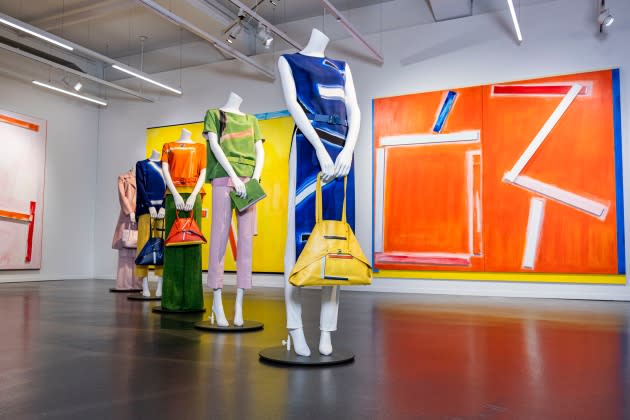
ZURICH — The new Akris exhibition at Switzerland’s top design museum is a feast for the eyes and the hands, where visitors can squint at intricately printed sequins, gaze upon dozens of large-scale paintings, photos and sculptures, fondle bolts of woven horsehair, and experience 800-gram cashmere double-face melting on their shoulders.
There are even 3D glasses that make Thomas Ruff’s depiction of Martian landscapes come to life on one of his arresting photo works — and on a silk Akris raincoat bearing the same otherworldly topography.
More from WWD
Inside the "Hair and Hair" Exhibition at Paris' Les Arts Décoratifs Museum
'The Love of Couture: Artisanship in Fashion Beyond Time' Exhibition at K11 Musea
While timed to the 100th anniversary of the St. Gallen-based fashion house and peppered with historical information, the sprawling display at the Museum für Gestaltung Zurich mostly offers a deep dive into Albert Kriemler’s creative process, focusing on the last 15 years, when artistic collaborations and technical wizardry came to the fore.
Kriemler teamed up with the museum’s curator Karin Gimmi, juxtaposing about 100 Akris outfits with artworks in crisp vignettes reminiscent of contemporary art galleries.
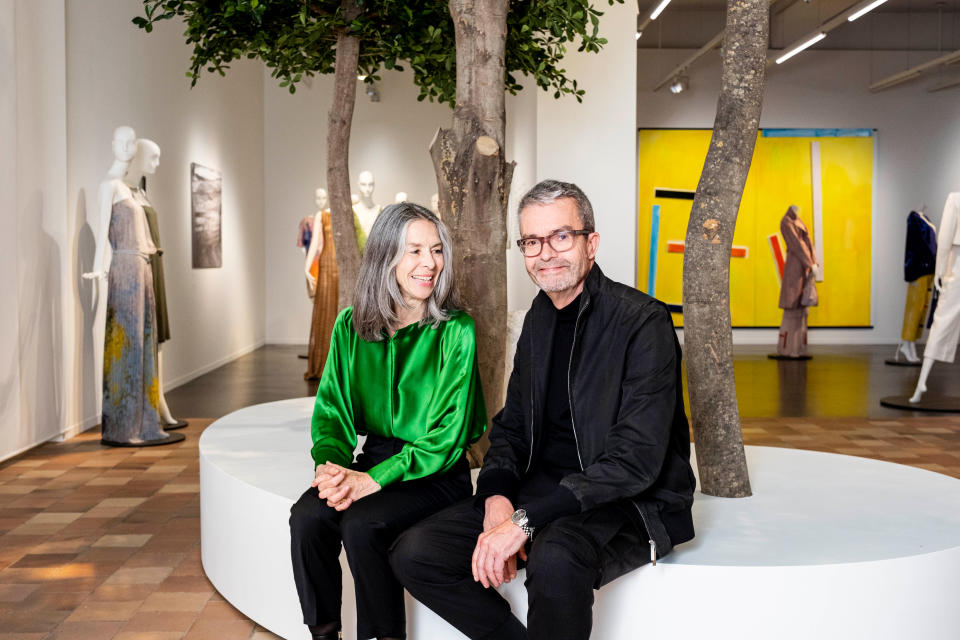
While designers and fashion brands of all stripes now routinely unfurl tie-ups with buzzy artists, Gimmi noted how Kriemler “never goes with what the art world is talking about right now” — and he also negotiates the contemporary art scene alone, without any consultant or advisor.
For example, he has shone a spotlight on Reinhard Voigt’s pixelized oil paintings, Cuban-American artist Carmen Herrera’s abstract color planes, and Rodney Graham’s multimedia hijinks, often involving him putting on garments and assuming curious contortions.
What’s more, Kriemler does not simply transpose the art he selects to garments, but lets the works contribute to the structure, proportions, coloration and spirit of his designs, Gimmi explained.
“It’s about his feelings, and he’s really building up a relationship with the people he works with,” she said.
Sometimes, the artists are friends, as was the case with Ruff, whom Kriemler has known for 30 years. The two men worked hand-in-hand on their fall 2014 collaboration, which included looks that lit up with LED embroideries.
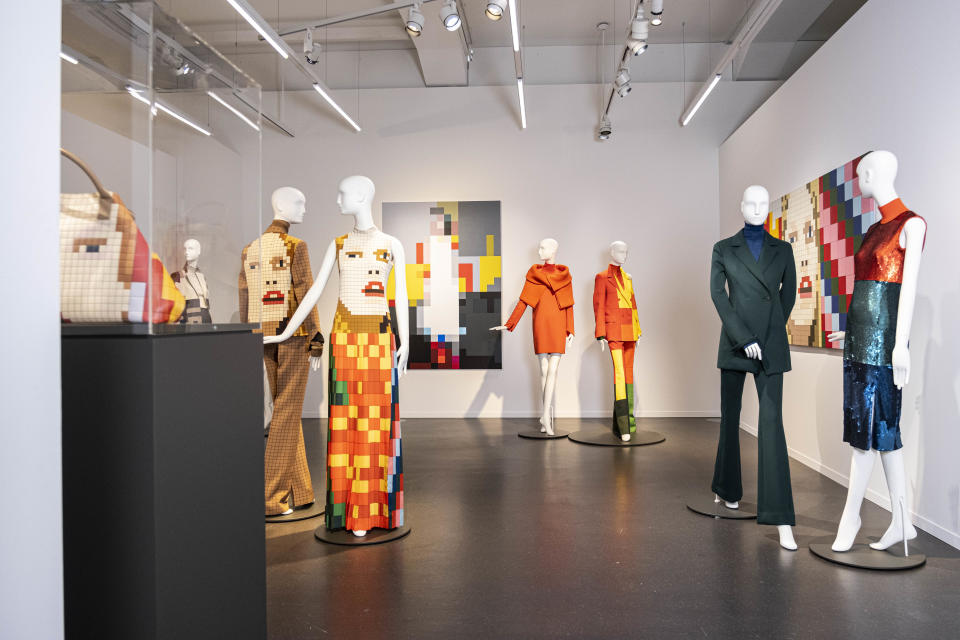
Several pandemic-era collections are featured, including the spring 2021 collection done with German artist Imi Knoebel.
The Knoebel room ranks as a complete cinematic art-fashion experience, the mannequins lined up diagonally, echoing the metal bars Knoebel tacks to his monumental canvases. The collection film by Anton Corbijn plays on a facing wall, pulsing with color. “He has a vocabulary of hundreds of prepared colors which he mixes,” Kriemler marveled.
The designer noted that department-store executive Burton Tansky, an early champion of Akris in the U.S., coaxed him into using brighter colors by inviting him to Florida, Texas and California in order to experience the lifestyle there.
“I saw what sunlight does to color,” he said in front of a display of hundreds of Akris fabric swatches from the past 40 years. “You have to have the right fabric to make the color beautiful.”
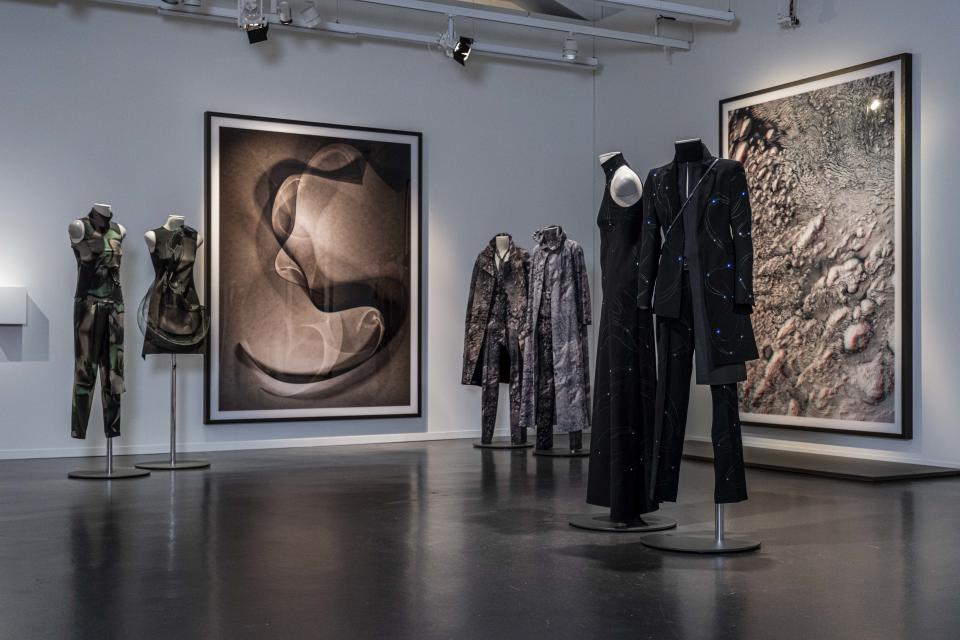
Architecture can get Kriemler’s creative juices going also, as seen in the Akris spring 2016 collection where Sou Fujimoto’s metal grids are interpreted as intricate guipure embroideries on biker jackets and zippered dresses, while porous roof-scapes were expressed as lean 18-gauge silk knits and diaphanous circle skirts riddled with similar holes, some achieved via laser-cutting.
Thanks to the Swiss firm’s seasoned seamstresses, Kriemler was able to translate a wooden gate from Ian Hamilton Finlay’s Scottish estate into an arresting column gown, and photos of his ponds into dreamy, watery prints on silk georgette.
Akris’s 480 Swiss employees were among the first to discover the showcase on Wednesday. Pieter Kriemler, Albert’s brother and chief executive officer at the family-owned firm, said the entire company was energized by the project and he felt it important to give them the V-VIP treatment.
The exhibit open to the public on Friday and runs through Sept. 24.
“Collections need to be realized by passionate people,” the executive said. “Especially after COVID[-19], this exhibition provided a big, positive push.”
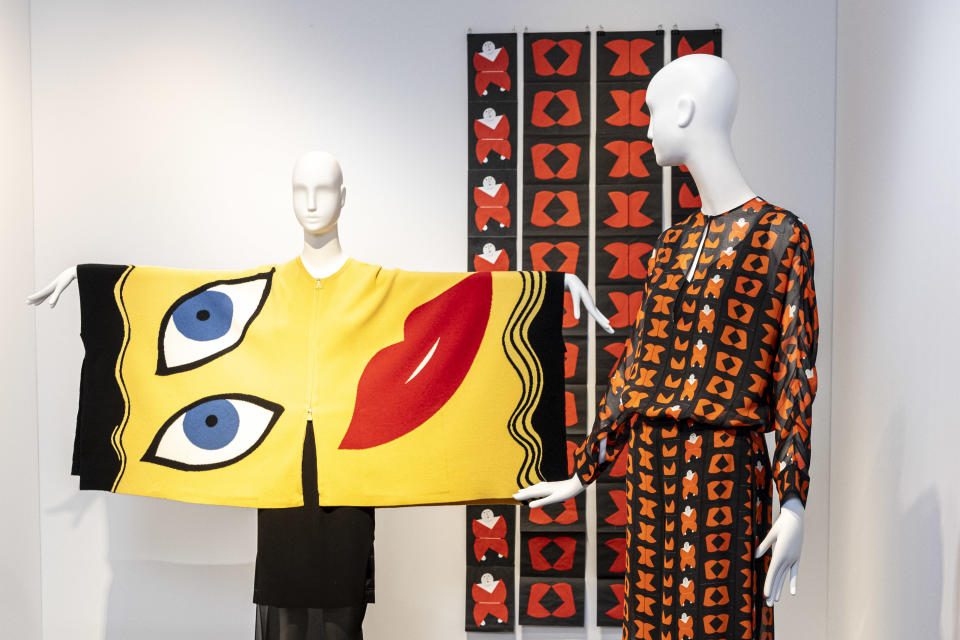
Over the coming months the brand’s wholesale and commercial partners will also be invited to discover the display in a vaulted space reminiscent of a cathedral.
It unfurls thematically, and visitors can dip into the rooms flanking the central nave at their whim. The first room to the left of the trapezoidal entry portal is dedicated to Akris founder Alice Kriemler, who turned out aprons made of the finest cottons with beautiful embroideries.
Albert Kriemler recalled how his grandmother’s comportment changed the minute she tied on her apron and headed into the Akris atelier and workshops.
“I was always concerned that the apron is something very far from today,” the designer mused. “The company started dressing women for their daily work life, and we don’t to do something so different today.”
Gimmi noted that Akris exalts a core belief of Bauhaus scholar Max Bill, whose thinking informs the design museum, located in a Bauhaus-inspired building from the ’30s.
“His goal was to create functional things that are also beautiful, and Akris is very much in line what with what we stand for,” she said.
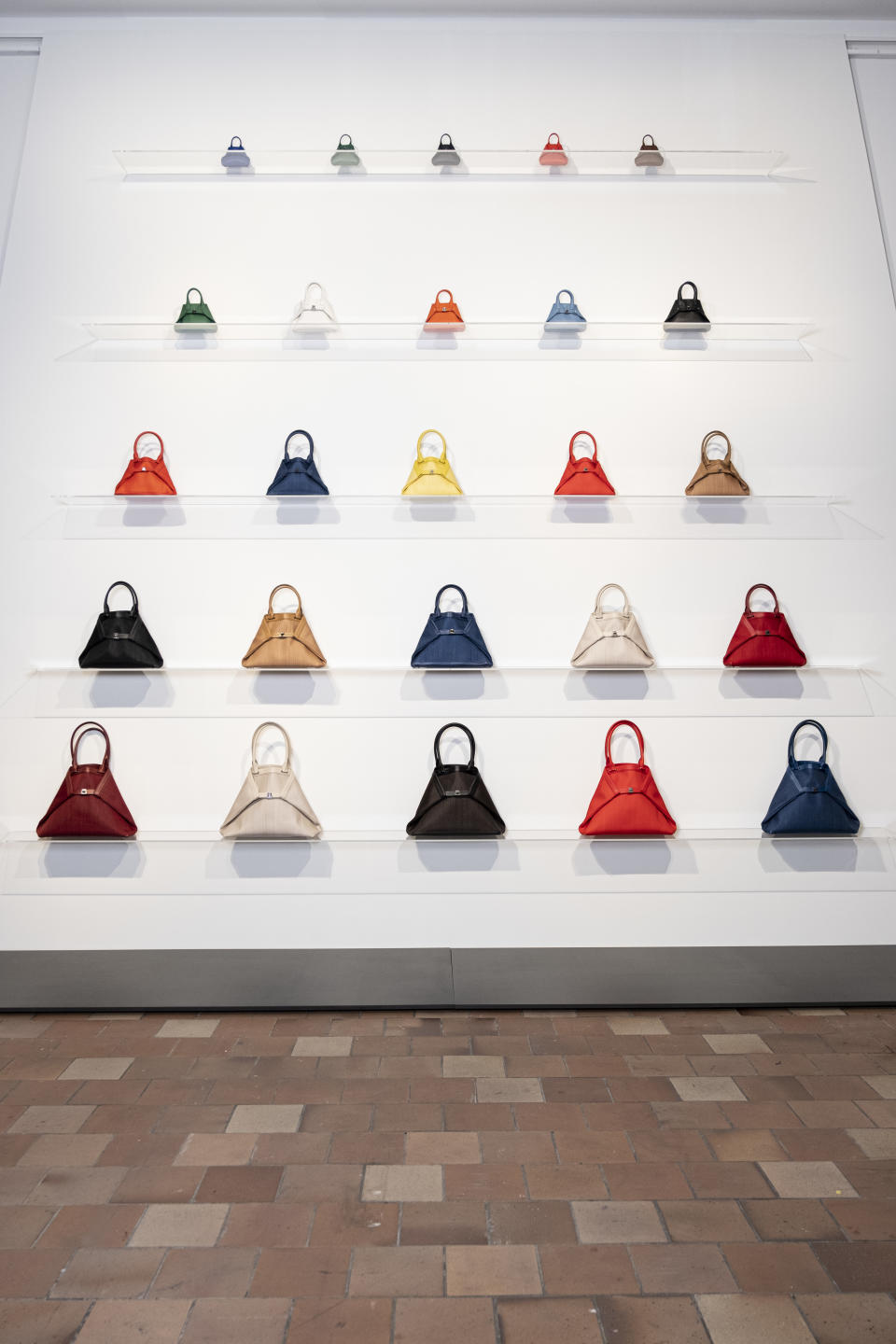
Albert Kriemler said he ventured into prints in the mid-2000s at the suggestion of his brother, remembering a small digital printing machine he had encountered at a University of Lucerne campus dedicated to textile studies and research.
The machine allowed him to create photorealistic prints on fabrics, opening a new creative vista, establishing another brand signifier for Akris, and making his artistic collaborations highly collectible.
“You always have to try new things,” Kriemler said, repeating a mantra instilled in him by his grandmother and his father, Max, always on a quest to find or invent the most exceptional fabrics. “Today, I still use several materials he developed.”
Interspersed among the recent collections are vintage binders cataloging St. Gallen embroideries, charming family photos, early Akris advertising campaigns and an embroidered skirt suit by Cristobal Balenciaga circa 1940s, which a 27-year-old Kriemler found at an open-air antique market in New York’s Flatiron district.
And one of Akris’ best-selling blouses of all time, trimmed with lily of the valley embroidery, circa 1953, is also displayed. The stretch silk chiffon number from the fall 2002 collection was showcased in a 2006 exhibition mounted by Akris at the Textilmuseum in St. Gallen.
Centenary celebrations kicked off last October with its spring 2023 show, a private dinner, and the release of the 162-page tome “Akris — A Century in Fashion Selbstverständlich.” (The last word translates to “of course” in English.)
Anniversary events have unfurled around the world, including recent repeat shows in Seoul and Tokyo.
What is sure to be one of the most popular rooms in the new Zurich exhibition hosts a rack of double-face cashmere coats in sizes 2 to 16.
“You have to feel what Arkis is all about,” Kriemler said with a smile.
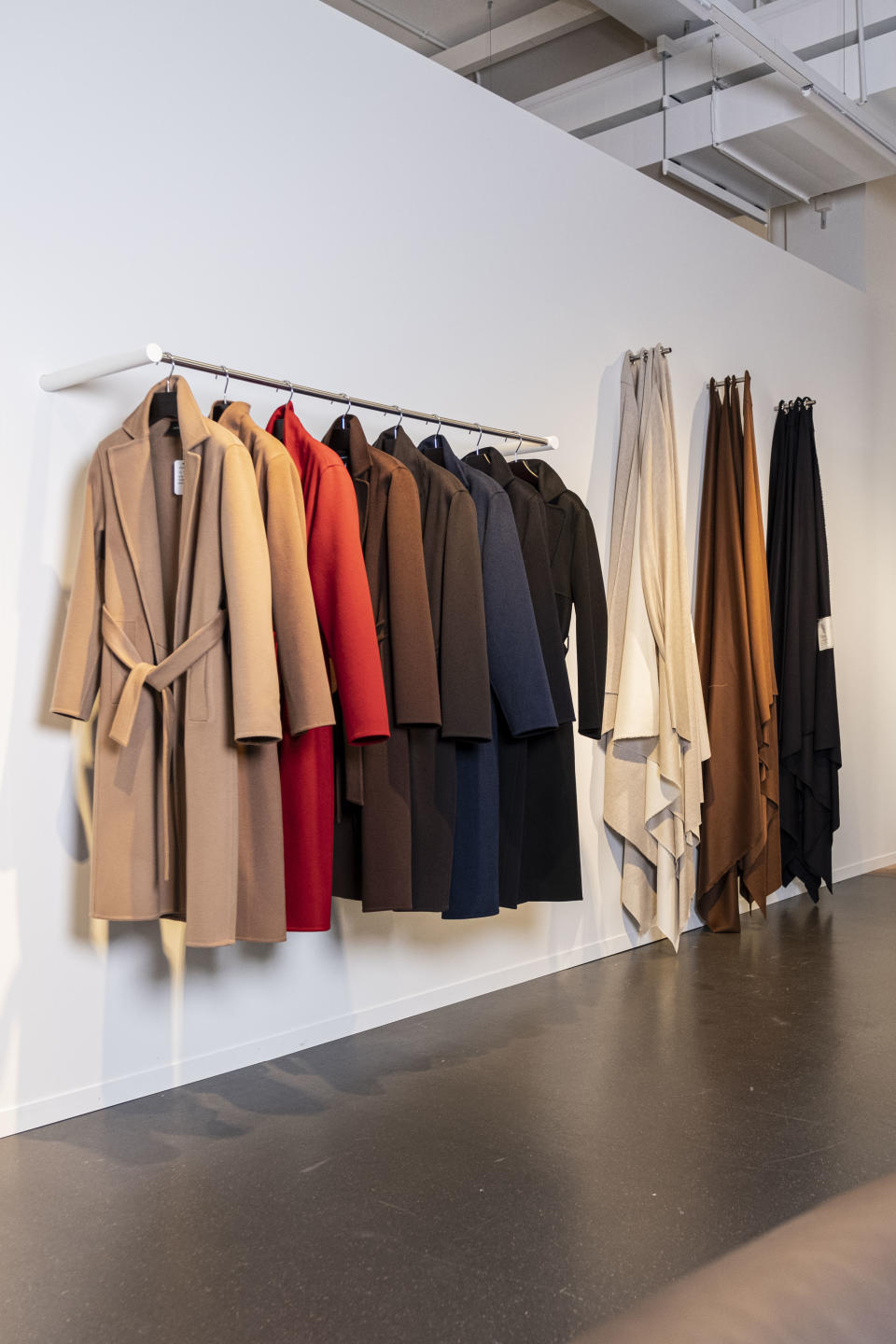
Best of WWD

